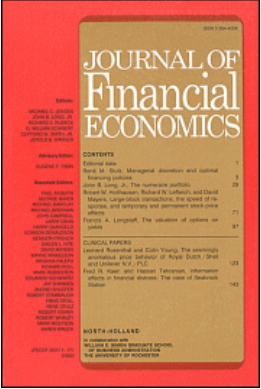When do short sellers trade? Evidence from intraday data and implications for informed trading models
IF 10.4
1区 经济学
Q1 BUSINESS, FINANCE
引用次数: 0
Abstract
Using 2015–2019 intraday short sale data from CBOE, we show that shorting flows near the open, middle, and close all negatively predict future returns, but the shorting flows near the open and middle have stronger predictive power than shorting flows near the close. We relate our findings to three informed trading models with different predictions on the timing of the trades. The long term predictive power of shorting flows near the open and midday is consistent with Kyle’s (1985) model of steady trading; the intraday variation in shorting flows’ predictive power is more consistent with Holden and Subrahmanyam’s (1992) aggressive trading model, in the sense that predictive power of shorting flows is stronger when there is greater urgency to trade at open and when the securities lending market is more competitive; and the liquidity timing hypothesis from Collin-Dufresne and Fos (2016) is also supported by the finding that opening shorting flows increase for firms with better liquidity conditions.
卖空者什么时候交易?来自盘中数据的证据和对知情交易模型的影响
利用2015-2019年芝加哥期权交易所(CBOE)的日内卖空数据,我们发现开盘价、中间价和收盘价附近的做空流量都对未来收益有负预测,但开盘价和中间价附近的做空流量比收盘价附近的做空流量具有更强的预测能力。我们将我们的发现与三个对交易时间有不同预测的知情交易模型联系起来。开盘和午盘附近的卖空流的长期预测能力与Kyle(1985)的稳定交易模型一致;卖空流量的日内变化预测能力更符合Holden和Subrahmanyam(1992)的激进交易模型,即当公开交易的紧迫性更大、证券借贷市场竞争更激烈时,卖空流量的预测能力更强;collins - dufresne和Fos(2016)提出的流动性时机假设也得到了流动性条件较好的公司开放卖空流量增加的研究结果的支持。
本文章由计算机程序翻译,如有差异,请以英文原文为准。
求助全文
约1分钟内获得全文
求助全文
来源期刊

Journal of Financial Economics
Multiple-
CiteScore
15.80
自引率
4.50%
发文量
192
审稿时长
37 days
期刊介绍:
The Journal of Financial Economics provides a specialized forum for the publication of research in the area of financial economics and the theory of the firm, placing primary emphasis on the highest quality analytical, empirical, and clinical contributions in the following major areas: capital markets, financial institutions, corporate finance, corporate governance, and the economics of organizations.
 求助内容:
求助内容: 应助结果提醒方式:
应助结果提醒方式:


